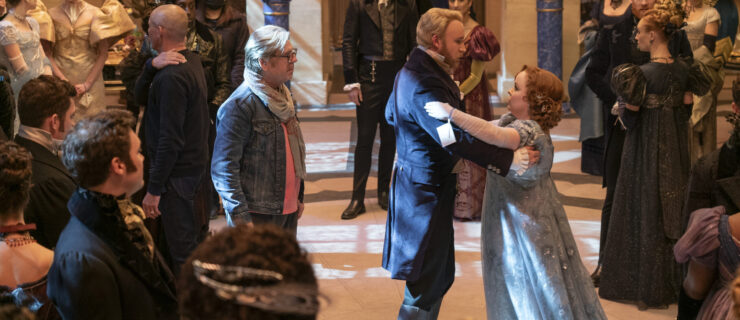Singing and Dancing…Together?!
Singing and dancing simultaneously can be daunting. Add the challenge of staying in character and you might have a recipe for disaster. If this sounds like your worst nightmare, take a breath. Dance Spirit asked a team of professionals to address the most common reservations aspiring triple threats have about performing challenging song and dance numbers, like “One,” from A Chorus Line, or “Seize the Day,” from Newsies.
How can I sing when I’m so focused on the choreography?
Doing so can feel like you’re trying to rub your belly and pat your head at the same time. One of the key elements is matching the singing to the movement, says Diane Lala, resident musical-theater choreographer at the University of Cincinnati, College-Conservatory of Music (CCM). “When my students learn the choreography, I tell them to say the lyrics while they move,” Lala says. “That way they can see how the two pieces fit together.” Choreographers often use movements to accent certain lyrics or musical phrases. Don’t be afraid to ask if you need help making connections to the vocals.
Sometimes, even just moving around as you sing can be helpful. Broadway performer Sarrah Strimel used this tactic when learning musical numbers in Christopher Wheeldon’s dance-heavy An American in Paris. “Our musical director had us walk around the room while practicing our parts,” she says. This is also a good challenge if you have trouble singing when you’re dancing next to someone in a different vocal part.
When I sing out, my movements get smaller. How can I dance full-out and sing loudly?
Bethany Elkin, a director and choreographer at NYC’s Marymount Manhattan College, advises students to focus on their breath, since both dancing and singing require lots of air. “When you’re rehearsing the movement, try to find as much breath as possible in your belly and lower back,” she says. Dancers often learn to take shallow breaths in their chests rather than thinking of the roundness of their breathing in the stomach and lower back.
Elkin counteracts this training in her morning dance classes. “During barre or a warm-up in center, I have my students focus on taking deep breaths that will help support their singing,” she says. Elkin also suggests doing plank exercises, imagining a string connecting the belly button and the spine, to help strengthen the muscles you need for singing.
If you’re not sure you’re breathing deeply enough while moving, “turn profile in the mirror and watch yourself breathe,” Strimel says. “Dancers tend to be afraid of disrupting their lines with a ‘large gut,’ but it’s more about allowing your diaphragm to release.” Strimel also suggests trying yoga classes to learn how to relax and breathe deeply while strengthening and stretching your muscles.
The choreography is so fast—I keep losing my breath!
Breathing is especially challenging in high-energy ensemble numbers—like “Whipped into Shape,” from Legally Blonde, in which performers jump-rope and sing. In these cases, staggering your breathing is key. This means that performers take short breaths at different times, but there’s no audible break in the music. Ryan Blackson, a dance major at Marymount Manhattan, used this tool in a regional production of Cats. “I was constantly listening to the person next to me to hear if they were still singing so I could take a breath,” he recalls.
If you’re really gasping for air, hit the gym for a cardiovascular workout on an elliptical machine or a bike. Challenge yourself to sing or speak your lyrics while you’re working out to build stamina.
I have to think about singing so much, I can’t remember the choreography.
The more complicated a vocal harmony is, the more concentration it requires. Tap into your strength as a dancer and get the choreography into your muscle memory—then add the singing. Don’t get discouraged. “Learning to sing and dance together is building a skill, just like working on your turnout,” Strimel says. “It’s a muscle that you have to train.”
For that reason, don’t hold back. Strimel’s motto is to sing loud and proud so the vocal coach can correct her if she needs help. “I tell myself to ‘Sing out, Louise!’ ” she says, referencing the famous line from Gypsy. “If you’re wrong, you’re not going to be fired. In rehearsal, it’s always better to be strong and wrong than timid and right.”



